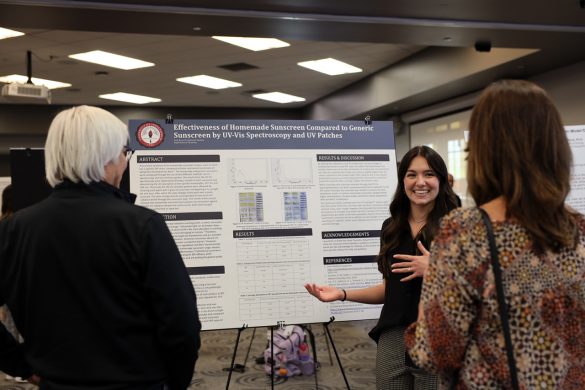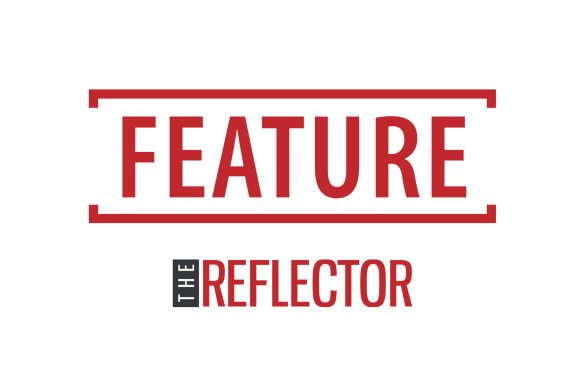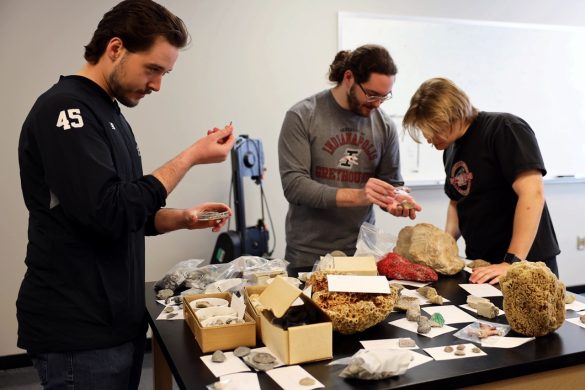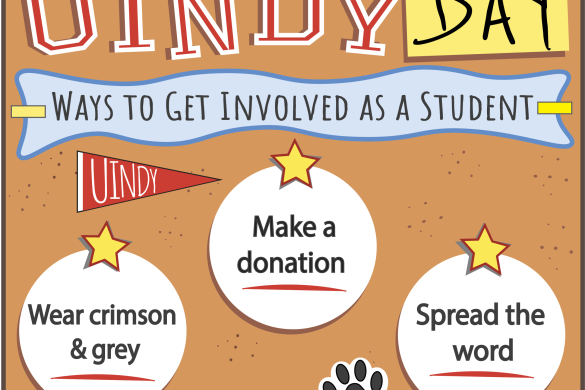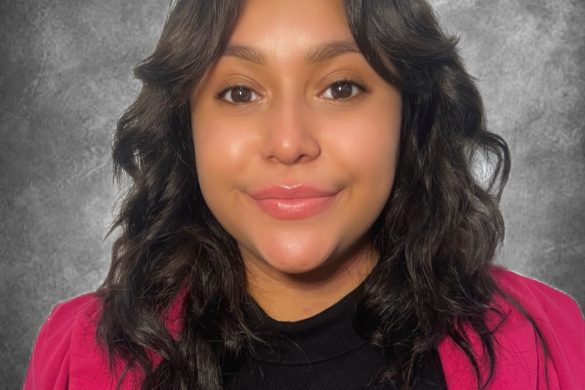Seventeen years ago, Art Faculty Adjunct Michael Schwab was put on the spot by one of his former University of Indianapolis professors, after suggesting the department could make some changes. The professor replied with a proposal of put up or shut up and offered Schwab a job filling in for a professor who could no longer continue teaching.
Schwab currently works as creative director for Llamar Advertising Indianapolis. Llamar is an advertising agency that creates billboards for clients. He is in charge of creating concepts for clients who do not have other resources and reviewing every design before it goes to print for the billboards. Before this, he took on many internships while at UIndy to gain experience.
“I owe a lot to my professors at the time who steered me towards terrific internships. My senior year, I did a number of internships. The last one was for an advertising agency,” Schwab said.
“… They kept me for the summer and from there hired me full time. I was there for five years and worked my way up from entry level to senior art director.”
Before coming to teach at UIndy, Schwab spent 15 years working as a professional. He said that his work experience only partially prepared him for teaching.
“This [teaching] was a whole new level,” Schwab said. “So the first year was a learning experience for myself. Then I got a handle on it and have enjoyed it ever since.”
Associate Professor of Art and Design Julia Taugner has been working with Schwab since she began teaching in 1999. She said he brings new perspective to her department.
“Mike is very knowledgeable about the design industry, since he is working as an art director and now a creative director,” Taugner said. “He interacts with clients. He knows the changing trends in the design industry.”
Schwab said that while his experience within the advertising world helps him teach, his students help teach him to improve relations with his clients. He sees many similarities between his two jobs.
“That [experience] kind of relates directly to dealing with experienced students who are learning the process and hoping to further their knowledge to be able to be hired in the field but similarly to clients who are experienced in certain software and design in general,” Schwab said.
According to Taugner, Schwab brings to the art department knowledge that helps keep courses current with what is happening in the professional field. She often consults with him to make sure the curriculum is staying current.
“I think they [adjuncts] also help us keep up with the industry trends because they’re there in the middle of those things,” Taugner said. “So sometimes I’ll ask Mike, ‘Does this or that in the curriculum seem as relevant as I think it is?’”
She also sees that Schwab is interested in his students’ success. According to Taugner, Schwab helps students gain insight into how to be successful in the industry.
“He’s always really professional in his manner, really business-like. And yet, he’s very interested in the students. That’s always clear from talking to him,” Taugner said. “Because adjuncts don’t make a lot of money, he doesn’t do this for the money. He does this because he cares about the program. He cares about the students.”
Taugner talks to students frequently and sees the impact that Schwab has on her department.
“One student just told me that he’s been working for a few years, and he told me it was Mike who first brought it home to him that he needs to think about when he is going to get a job,” Taugner said. “Because Mike would say, ‘When you’re working’ and ‘when you get a job in design.’ And it kind of dawned on him, ‘Oh, I’m going to actually be working as a designer, and this is going to be a transition.’”

